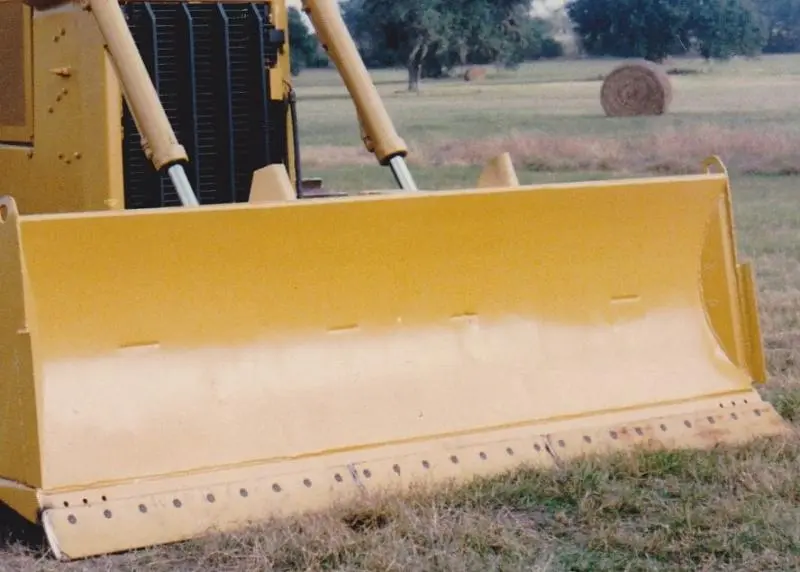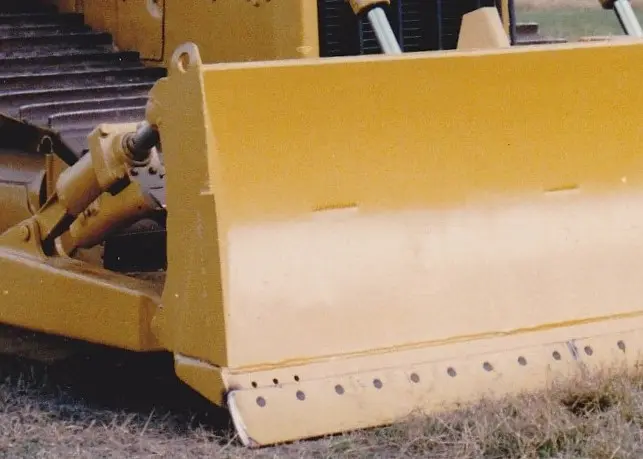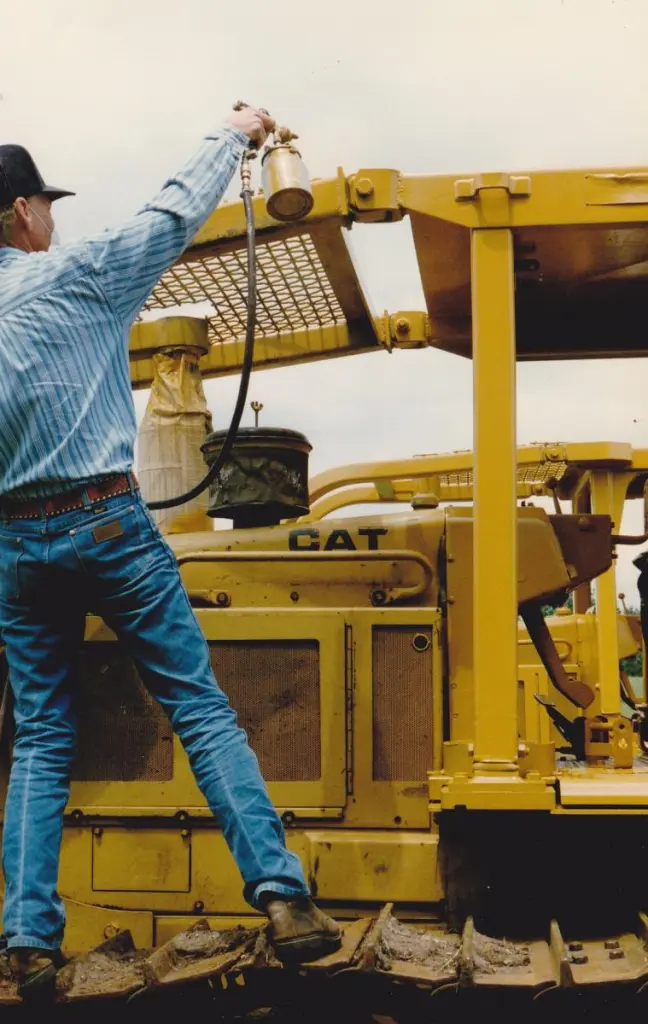South Texas is infested with “Black Brush” and “Buck Brush” which are both very difficult to bulldoze. This brush is not large or tall, typically under 12ft. tall, but it’s wood is very hard with slick bark and the brush so firmly rooted that the bulldozer blade will simply ride over the brush removing the smaller branches and leaving the trunks in place.
Much of my business back then was the clearing of seismograph (oil & gas exploration) right of ways. When we were clearing those right of ways through black and buck brush we had to either make 6-8 back and forth passes to try to remove the remaining “switches” or remove the brush by digging it out by running the blade several inches below the soil surface. The landowners objected to the latter method as a great deal of thier soils were highly-erodible.
In the early 1980s I was discussing these difficulties with another operator who told me a company he had worked for had experimented by attaching grader cutting-edges to their bulldozer blades. The grader cutting-edges they had used were thin and the bolt-holes were smaller and spaced wider than the bulldozer moldboard bolt-holes, requiring all new bolt-holes to be torched in the bulldozer moldboards. The results of the experiment were mixed, the sharper grader cutting-edges worked much better cutting the tough brush, but the bolts and/or the cutting-edges broke too often and the idea was abandoned.
I was at my caterpillar dealer a few years later when I walked past a rack holding larger grader cutting-edges than I had seen before, I recognized the bolt-holes in those large edges were ¾” diameter and they were spaced 6” apart, the same as the moldboards on my D6D 6A blades. I bought 2 of the 7’ long X 8” wide X 5/8” thick 7D1158 grader cutting-edges to try. I had to trim the ends of the cutting-edges as I was not using any end-bits and I had to torch a total of 4 new bolt-holes in the mold board where the end-bits had been. The result was amazing, the grader cutting-edges became my secret weapon.
The curved grader cutting-edges change the “angle of attack” and that combined with the sharper edge allow the blade to cut into the brush and either shear it off or pull it out.
The edges took some getting used to as they made the blade want to cut into the soil especially before a little “heel” is established on the edge. We went from using constant down pressure in hard dirt to having to be careful to not let the blade dip in and cut sharply into the hard dirt. Both of my D6Ds were equipped with back-up rippers but we never used them after we switched to grader cutting-edges.
There were some drawbacks when using the grader cutting-edges, we had to be careful when shoving large trees to avoid breaking the cutting-edge bolts as the curved cutting edges were bolted to the flat moldboard. We also had to change the cutting-edges more often as the grader edges are not reversible and the advantages of the grader edges lessen as the sharp edge becomes too wide.
We decided the advantages far outweighed the drawbacks because the of the great increase in production and the better-looking results in clearing “Black”, “Buck” and other brush.
The Cat DH-2 grader cutting-edges are awesome, we were using them in an application that far exceeded their design but in more than a decade of using them we never broke one even though we would sometimes stress them to the point that they would become permanently warped.
Photo 1: My D6H LGP 6S blade was also able to use my “secret weapon”.
Photo 2: Closer view.
Photo 3: The D6D on the left has new grader cutting-edges installed, we hadn’t gotten to the D6D on the right yet. Note the broken/missing bolt. Also note the Peterbilt haul-truck being used as the air compressor for painting the ‘dozers.
Photo 4: Closer look at the D6D cutting-edge.
Photo 5: We don’t need no stinkin’ paint booths!
[attachment=42062]CE 1.jpg[/attachment] [attachment=42063]CE 2.jpg[/attachment] [attachment=42064]CE 3.jpg[/attachment] [attachment=42065]CE 4.jpg[/attachment]
[attachment=42066]CE 5.jpg[/attachment]
Thanks for looking,
Craig









